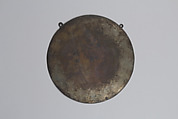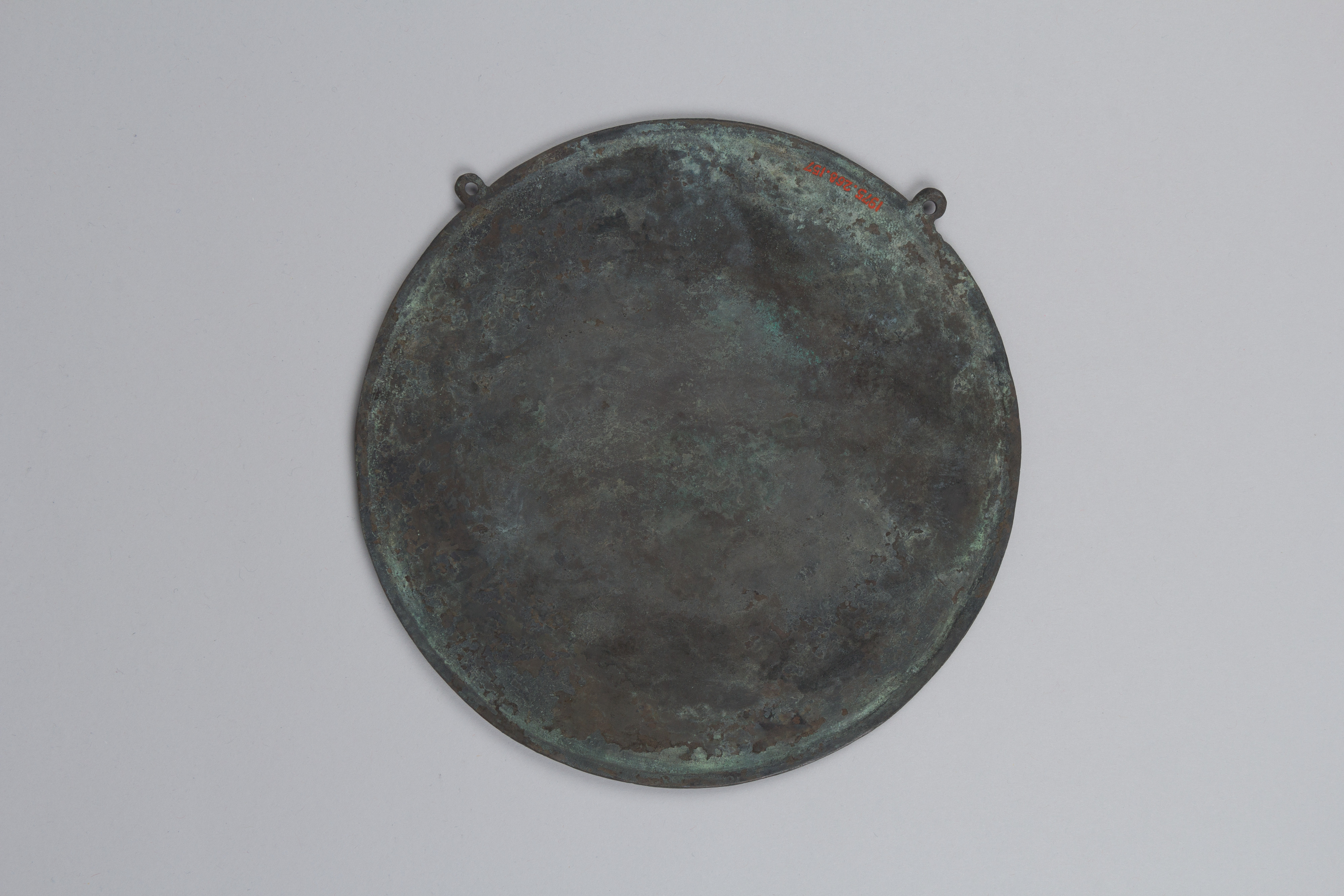Votive Mirror with Eleven-Headed Kannon
Not on view
Images of deities carved in bronze mirrors (kyōzō) had spiritual and ritual significance in the late Heian period. The incised representation of the Eleven-headed Kannon (Ekādashamukha) merges visual and symbolic attributes of both Shinto and Buddhist religions. Kannon sits on a lotus flower, holding a hanging rosary with his right hand and forming a gesture that signifies the discussion and transmission of Buddha’s teachings with his left hand. He wears a headdress composed of eleven small-scale heads, which symbolize Kannon’s ability to see and care for the suffering of all sentient beings. The two bronze loops on the upper portion of the disc suggest that the mirror was suspended.
Due to rights restrictions, this image cannot be enlarged, viewed at full screen, or downloaded.
This artwork is meant to be viewed from right to left. Scroll left to view more.



